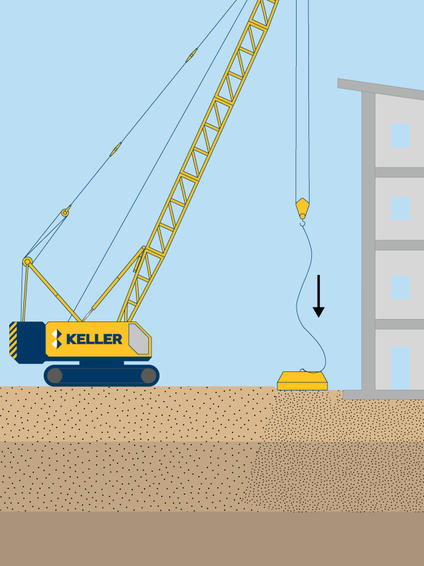Dynamic compaction involves the controlled impact of a crane hoisted weight, of between typically 10-30 tonnes, falling in a pre-determined grid pattern to improve loose, granular soils and fills. Dynamic replacement is a variation on dynamic compaction and uses the energy of a falling weight to drive large diameter granular columns into cohesionless soils and fills.

Common uses
Process
Dynamic compaction is a ground improvement technique that densifies soils and fill materials by using a drop weight. The ground is subjected to repeated surface tamping using a heavy steel and concrete weight. Typically the tamper, or 'pounder' weighs between 10 and 30 tonnes, dropping in free fall from heights of up to 20 metres. The tamper is dropped a set number of times on a grid pattern over the site to form a 'pass'. Two or three passes may be required on a site, dependent on soil type, depth and condition. The imprints formed at each drop position are infilled with granular material after each pass.
Dynamic replacement drives selected material into the ground to partially or completely displace the in-situ material to form columns of compacted material. A surface blanketing layer consisting of compacted selected material is typically used to effectively transfer the load to these compacted columns.
Advantages
Quality assurance
Typically, in situ testing by borehole or static cone penetrometer, allied with measurement of print volume and site surface settlement is performed during the dynamic deep compaction.
The treatment pattern, energy level, number of passes and phasing of passes must be designed to take into account the soil conditions, type of development and required bearing capacity and settlement characteristics. It is essential to have a thorough understanding of the soils prior to treatment, and to maintain very close control during all phases of the work. Typically, insitu testing by borehole or static cone penetrometer, allied with measurement of print volume and site surface settlement is performed during the dynamic deep compaction contract.